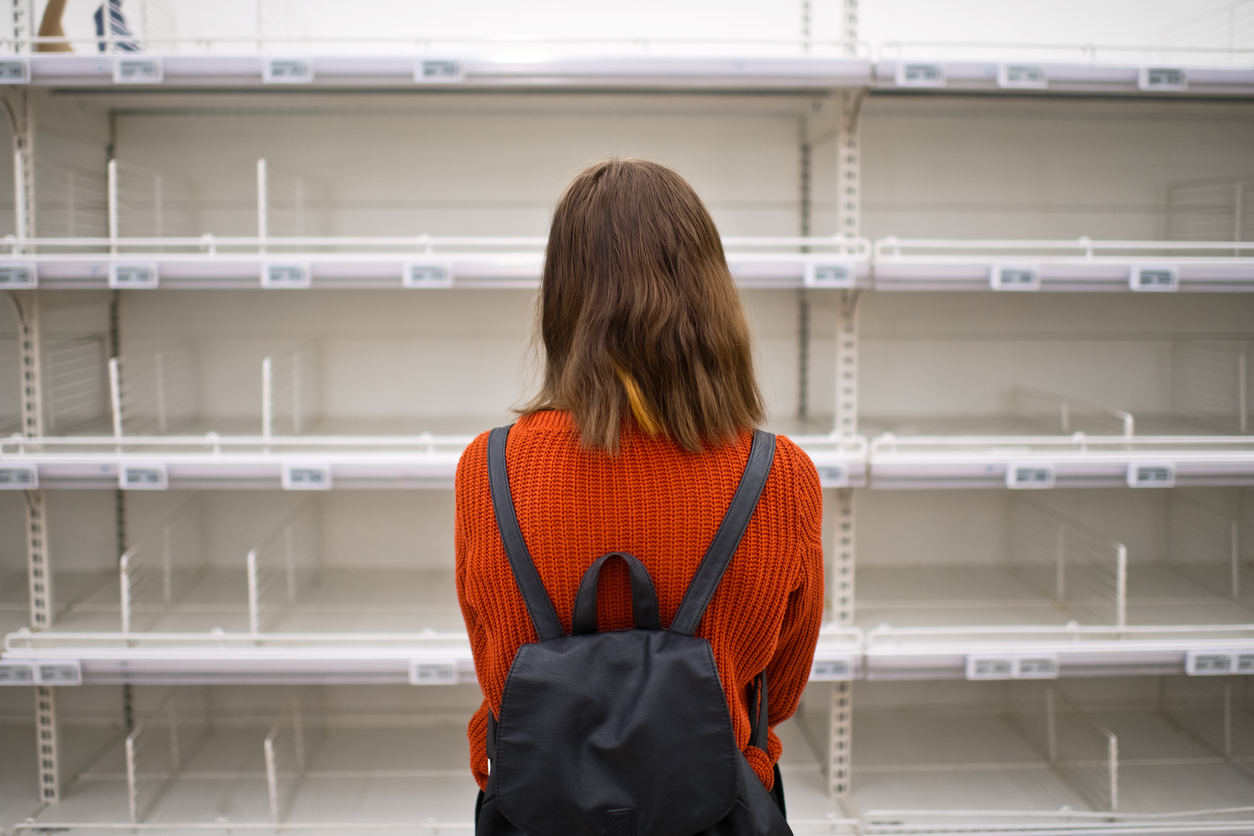
For Canadian consumers, 2021 meant worldwide supply chain problems, higher prices at the supermarket and at the gas pumps, and inflation at an 18-year high – an unprecedented convergence of events caused largely by the COVID-19 pandemic. And just as hopes began to rise last fall that the worst of the pandemic might soon be over, a sudden spike in COVID-19 cases due to the new and highly transmissible Omicron variant led economists to rethink their forecasts for the coming year.
For most of the last two years, many Canadians held off on vacations and other big-ticket purchases due to pandemic restrictions and job losses. Meanwhile, global supply chain issues caused by the pandemic led to many items not making it to store shelves. As a result, by the 2021 holiday season, there was too much money chasing too few items, leading to higher prices for just about everything.
Consumers will continue spending – for now
Data from Statistics Canada from last November – before the full onset of the Omicron restrictions and lockdowns – showed Canadian consumers were ready to start spending again, believing the pandemic would soon end. Following a lull in the second quarter of 2021, the Canadian economy grew by 5.4 percent in the third quarter, fueled by a healthy growth in consumer spending. Canadians spent more on things they weren’t able to earlier in the year – at restaurants and bars, on hotel stays, and on air travel – which rose a whopping 181.9 percent.
John Gradek, Faculty Lecturer in McGill’s School of Continuing Studies’ certificate and diploma programs of Supply Chain Management, Logistics, and Operations Management, suggests the momentum may continue – at least for the short term.
“Demand will remain unstable, as consumer countries, with their greater availability of disposable income coming from travel restrictions and localized lockdowns, will continue their buying spree for more and more lower-cost imported goods,” Gradek says. “There might be a short-term saving grace, inasmuch as all that ‘stuff’ that was stuck pre-Christmas all along the supply chain will shortly begin to show up on our retail shelves – a sort of Boxing Day sale, but now in February and March.
“Nobody said this was a simple scenario.”

Charles de Brabant, Executive Director of the Bensadoun School of Retail Management in the Desautels Faculty of Management, says while Omicron may cause a short-term slowdown in consumer spending, things may pick up if the virus subsides quickly.
“In the short term, Omicron has put somewhat of a damper on buying experiences,” de Brabant says. “We may see a shift toward greater product consumption, especially if the over-ordering of retailers in the last two quarters of 2021 translates into a lot of late orders come in during the first quarter of 2022.”
A major challenge for retailers, however, is there are no major sales events like Christmas, Boxing Day or Black Friday to get consumers spending again during the first quarter of the year, with the possible exception of Valentine’s Day. “So maybe, major retailers will have to invent one or two major buying events, like ‘the Return of Spring.’”
Meanwhile, Gradek says the longer the pandemic persists around the world, the more likely there will be problems with global supply chains. And it might take several months – at the very least – before those issues fully right themselves.
“I would have to say that the pandemic is not over, even as we fight our way through the Omicron variant,” Gradek says. “Disruption on both the supply and the demand end will have the supply chain remain as a major news item through 2022 and quite possibly 2023.”
Meanwhile, the rapid spread of Omicron is complicating supply chain problems, as employees in the transportation and retail sectors who contract the virus take time off to isolate. Even before the onset of Omicron, many sectors of the Canadian economy had already been struggling with job vacancies.
Supply chain issues will continue to affect food prices
One of the things that became obvious to everyone in 2021 was a sharp rise in food prices, and the latest Canada Food Price Report suggests there’ll be little relief in the coming year. It predicts food prices will continue to rise by about 5 to 7 percent in 2022 – due mainly to the supply chain disruptions.

“Nothing on my radar screen that shows a stabilizing of either food or gas prices, let alone a return to previous levels,” Gradek says. “Always a question of supply and demand, so with consumers being more careful with the food-buying dollars and managing their spend through bulk buying and other cost-reduction strategies, the overall impact of these price hikes would be mitigated somewhat. And a good agricultural production level this summer would really help, climate change impact notwithstanding!”
Meanwhile, after sinking below a dollar per litre in the Montreal area in the early days of the pandemic in 2020, the price of gasoline shot up to record highs in 2021, topping out at well above $1.50 per litre. Gradek says the main factor affecting gas prices won’t be COVID-19, but geopolitics.
“The price of crude oil will be driving what Canadians pay, and the state of global political volatility will most assuredly impact crude oil pricing,” Gradek says. “Whether it’s Russia and Ukraine or China and Taiwan or OPEC squabbling with each other, any one or more of these flashpoints getting ignited will hit crude prices and we’ll feel the impact at our gas pumps.”
Meanwhile, inflation will continue to be an issue in 2022. The inflation rate in Canada reached 4.7 percent in November – a figure not seen since February of 2003. “How much worse it will get is unfortunately in the hands of our elected officials,” Gradek says. “My guess is that the rise will abate somewhat, but it will be a rise nevertheless.”
Expect the unexpected
The bottom line for consumers is that 2022 is shaping up to be another roller-coaster ride.
“Both retailers and consumers have had to, and will have to, become more adept with scenario planning – if this happens, my best course of action is A, and if that happens, my best course of action is B,” de Brabant says. “It therefore requires from both consumers and retailers: agility, creativity, a quest for efficiency and resilience.”
“I think the peace and quiet that supply chain academics have enjoyed up until recent times is gone forever, with empty store shelves and consumer product shortages continuing for the foreseeable future,” Gradek says. “It’s going to be one heck of a ride. Buckle up!”

I’ve been around for a few years, and earlier than this century, the inflation we are seeing now was considered normal. I think in the 1980’s we saw inflation at nearly 20%. Inflation rates seen during most of the last 20 years has felt like an anomaly. Then we were panicking at the thought of a stagnant economy with the risk of deflation, now we are panicking at what is a historically low level of inflation. We need to consider not where wages are, but what is the buying power of those wages.